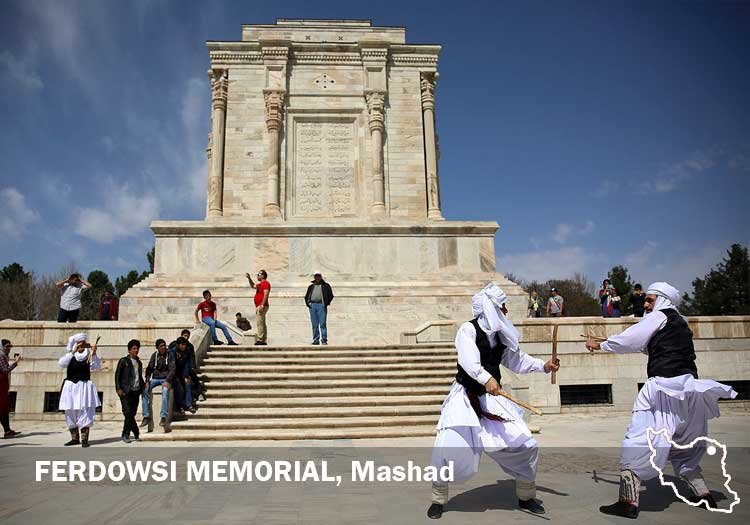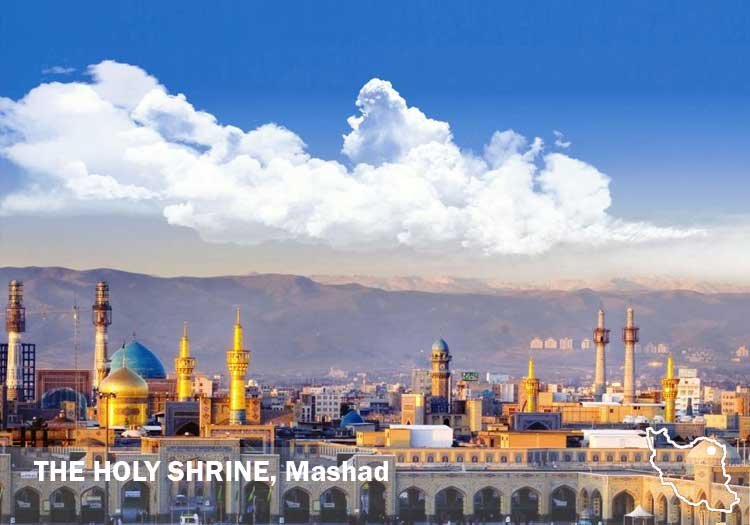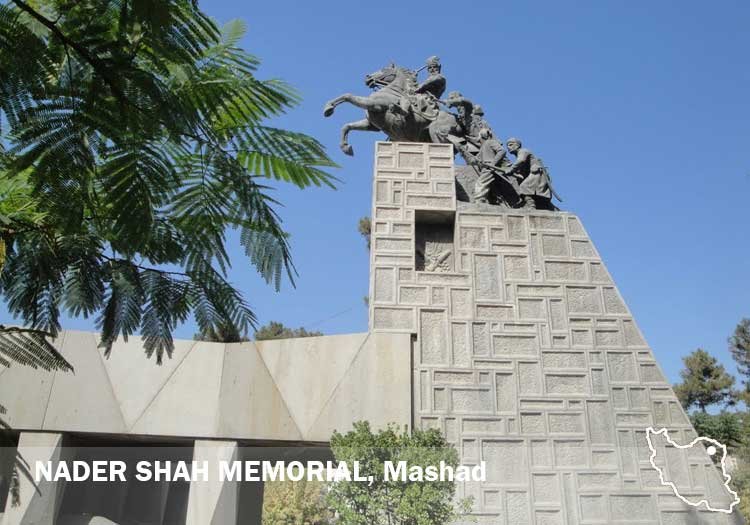Iran Cities
MASHAD



Mashhad, Iran’s holiest city, is the capital of Khorasan province. Mashhad is located 850 kilometers North East of Tehran and has population of over 2 million. The name means the burial place of a martyr. Back in the 9th century A.D., Imam Reza was poisoned and martyred in the city. He was the eighth Imam (head spiritual leader) of Shi’ate Islam. His holy position made his tomb a sacred place for pilgrims to worship. Millions of people pay pilgrimage to the holy shrine, undoubtedly the largest and most magnificent of its kind, every year. There are plenty of priceless objects and unique manuscripts in the shrine’s library.
Mashhad is a tourist city with many hotels of various categories as well as a great number of guesthouses for the pilgrims who come to this city from the other parts of the country everyday by tens of flights, trains and buses.
Before he died, the city was known as Sanabad, a small village in the north of Persia. After his death, pilgrims came and ended up staying in Mashhad. The village grew into a small city because of his shrine. Sunni Muslim forces sacked the city, followed by the Mongols in the 13th century. The shrine was badly damaged and, after time, rebuilt.
In the 16th century, three Safavid Dynasty rulers established Shi’ite Islam for the whole territory. The shrine was restored and enlarged. These rulers made pilgrimages to the site and since then it has become the most holy Shi’ite pilgrimage in Iran.
The mosque and ivan of Gowhar Shad rank among the most beautiful historic structures of the 15th century A.D. Iran. The founder of the mosque is Gowhar Shad, wife of the Taimurid Shahrokh.
It is a four-ivan Masjid with two tile-decorated minarets flanking its main ivan. Upon the front of the ivan, there is a stately inscription containing the name of Shahrokh Bahadur and the date 1418 A.D. A part of the inscription is by the Taimurid prince, Bysonghor Mirza and is exceedingly remarkable as a calligraphic achievement. The rest is from the Safavid period and has been attributed to Mohammed Reza Imami. The Gowhar Shad structures are masterpieces of archeological skill and tile decoration.
Tomb of Nader Shah
The city’s climatic condition is varied with very cold winters, pleasant springs, usually mild summers and beautiful autumns. The magnificent holy shrine of Imam Reza and the historical and artistic complex attached to it including the courtyards, porticos and porches, the Goharshad Mosque (of Timurid period) as well as its rich museum and library are the most significant sights to be seen by any visitor and pilgrim.
There is a magnificent golden dome over the shrine’s building; surrounded by several porches. The Grand Gohaharshad Mosque is located to the south of the shrine, the museum and the tomb of Sheikh Bahaee to the southeast and Parizad and Balasar Schools to the west.
Other than a number of large beautiful parks, the other sights tomb of Nader Shah of Afsharid Dynasty, Kooh Sangi pool. There are also some sights outside the city. Tomb of Khajeh Morad kilometers from Mashhad along the road to Tehran, the tomb of Khajeh Rabi’ located 6 kilometers north of the city where there are some inscriptions by the renowned Safavid calligrapher Reza Abbasi, and the tomb of Khajeh Abasalt in a distance of 20 kilometers from Mashhad along the road to Neishabour, (the three personalities were the disciples of Imam Reza).
Among the other sights are the tomb of the great poet Ferdowsi in Tous, 24 kilometers away from Mashhad; and the summer resorts at Torghabeh, Torogh, Akhlomod, Zoshk and Shandiz.
Mashhad is a tourist city with many hotels of various categories as well as a great number of guesthouses for the pilgrims who come to this city from the other parts of the country everyday by tens of flights, trains and buses.
Before he died, the city was known as Sanabad, a small village in the north of Persia. After his death, pilgrims came and ended up staying in Mashhad. The village grew into a small city because of his shrine. Sunni Muslim forces sacked the city, followed by the Mongols in the 13th century. The shrine was badly damaged and, after time, rebuilt.
In the 16th century, three Safavid Dynasty rulers established Shi’ite Islam for the whole territory. The shrine was restored and enlarged. These rulers made pilgrimages to the site and since then it has become the most holy Shi’ite pilgrimage in Iran.
The mosque and ivan of Gowhar Shad rank among the most beautiful historic structures of the 15th century A.D. Iran. The founder of the mosque is Gowhar Shad, wife of the Taimurid Shahrokh.
It is a four-ivan Masjid with two tile-decorated minarets flanking its main ivan. Upon the front of the ivan, there is a stately inscription containing the name of Shahrokh Bahadur and the date 1418 A.D. A part of the inscription is by the Taimurid prince, Bysonghor Mirza and is exceedingly remarkable as a calligraphic achievement. The rest is from the Safavid period and has been attributed to Mohammed Reza Imami. The Gowhar Shad structures are masterpieces of archeological skill and tile decoration.
Tomb of Nader Shah
The city’s climatic condition is varied with very cold winters, pleasant springs, usually mild summers and beautiful autumns. The magnificent holy shrine of Imam Reza and the historical and artistic complex attached to it including the courtyards, porticos and porches, the Goharshad Mosque (of Timurid period) as well as its rich museum and library are the most significant sights to be seen by any visitor and pilgrim.
There is a magnificent golden dome over the shrine’s building; surrounded by several porches. The Grand Gohaharshad Mosque is located to the south of the shrine, the museum and the tomb of Sheikh Bahaee to the southeast and Parizad and Balasar Schools to the west.
Other than a number of large beautiful parks, the other sights tomb of Nader Shah of Afsharid Dynasty, Kooh Sangi pool. There are also some sights outside the city. Tomb of Khajeh Morad kilometers from Mashhad along the road to Tehran, the tomb of Khajeh Rabi’ located 6 kilometers north of the city where there are some inscriptions by the renowned Safavid calligrapher Reza Abbasi, and the tomb of Khajeh Abasalt in a distance of 20 kilometers from Mashhad along the road to Neishabour, (the three personalities were the disciples of Imam Reza).
Among the other sights are the tomb of the great poet Ferdowsi in Tous, 24 kilometers away from Mashhad; and the summer resorts at Torghabeh, Torogh, Akhlomod, Zoshk and Shandiz.







